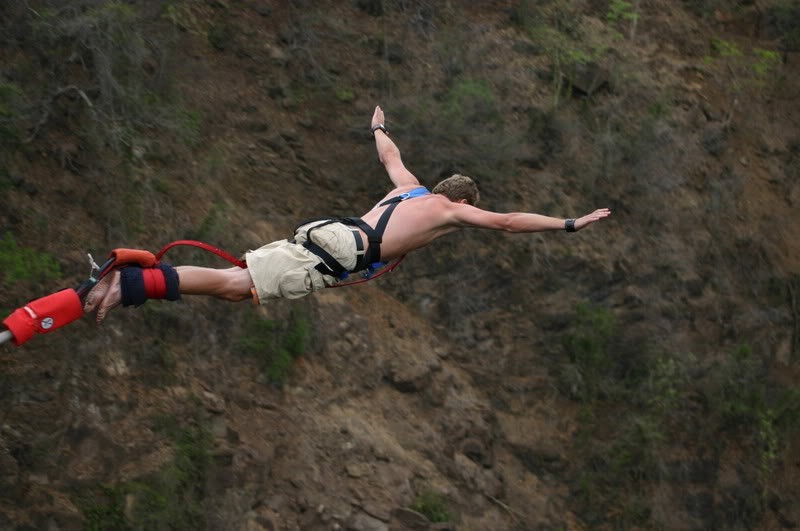VIX; The CBOE Volatility Inde Does it Measure Options for Rookies
Post on: 25 Май, 2016 No Comment

The CBOE volatility Index, VIX, was created and began tracking market data in June, 1988.  For most of its 20-year history, VIX was considered by many traders and investors to be a measure of the current fear or complacency of market participants.  VIX is an up-to-the-minute index.  According to the CBOE. VIX is calculated directly from the price quotations of nearby and second nearby S&P 500 Index options spanning a wide range of strike prices. The VIX calculation is independent of any theoretical pricing model
VIX tends to increase as markets fall, and decrease when markets rise.  There is a very good reason why this is true (more on this below).
As every trader remembers, 2008 was a very volatile year for stock markets around the world, and the levels of implied volatility as measured by VIX increased dramatically as the market tumbled.  A record closing high (81) was established during the worst of the market slide.
Why VIX rises as markets fall
Markets decline much more rapidly than they rise.  One popular phrase that describes this situation is that markets are much more likely to melt-down than they are to melt-up.  Thus, when markets begin to decline, market participants buy options.  Some buy as speculators, hoping the downward move will continue.  Others buy options to protect the value of their investments.  The more the market falls, the more option buyers appear in the marketplace searching for insurance.  They need to buy options urgently.  As you are aware, as more buyers appear and as sellers disappear, there is upward pressure on option prices.  That shouldnt be surprising as stock prices also fall rapidly as sellers predominate and buyers back off.  Add to that, the urgency displayed by some put buyers and its no wonder that option prices can surge.
Why are all options affected, and not only puts?  Its clear that most option buyers want puts under these circumstances.  But dont forget that a trader can buy calls and sell stock to create a synthetic put. Efficient markets do not allow those synthetic puts to trade at a bargain price.  Theres an arbitrage strategy (reverse conversion) that would provide free money to those who bought synthetic puts at a cheap price and sold real puts at a high price.  When the market is working, as it is virtually all the time, free money is not available.  Thus, as put prices move higher due to increased demand, an increase in implied volatility, and a falling stock market, call prices fall more slowly than you might expect from the options delta.  In extreme cases, calls increase in price (an amazing occurrence to unsophisticated option traders) when the implied volatility moves high enough. [Thats exactly what happened during the crash of October 1987.  All options increased in value as VIX surged to an incredible 150.  Note: That value was calculated after the fact because VIX had not yet been created.]  People were scrambling to buy any option they could get at any price to enable them to hedge, or reduce the risk of owning investments.]
When the market is moving higher, there is no such urgency to hedge.  Sure, some people buy calls to play the rally, but the panic is absent.  Thus, option buying tends to decrease during rallies as market makers and other traders become more willing to sell options because steady or rising markets an instill confidence that the future will not turn into a nightmare of uncertainty.
Thats the reason VIX has been referred to as the fear index.
Whats New?
Recently, we have seen divergence from the standard pattern.  We had bullish periods during which VIX increased, as well as periods of a declining market, during which VIX moved lower.  Im not making any predictions, but I am wondering if the traditional method for using VIX as a fear index is waning.
VIX represents the implied volatility of options that, on average, expire in 30 days.  Recently, VIX closed @ 43.  Thats another way of saying that the collective estimate of future market volatility over the next 30 days is 0.43.
Keeping math to a minimum, that translates into an estimate that there is a 68% (one standard deviation) chance that the realized market volatility (how much the market actually moved, when we look back 30 days from now) will be less than 43 and that there is a 32% chance it will be higher than 43.
And thats what VIX is supposed to represent an estimate of future volatility.  Most of the time when the market declines, the urgency to buy options translates into a higher VIX, and that, in turn, translates into an expectation that market volatility is going to increase.  But if options are being bought out of a need to avoid catastrophic losses, is it really an estimate that the future will be more volatile?  Or is it recognition that risk is too high and that insurance is needed for investor portfolios?
Currently, with SPX @ 814, many believe the market has bottomed and that if the market declines, it cannot decline by too much.  If thats the majority belief, then downturns will not be greeted with fear and as a result, VIX will not increase significantly.
Thats what I anticipate at least for the foreseeable future.  My guess is that VIX will cease being a measure of fear and become a true estimate of future volatility.














